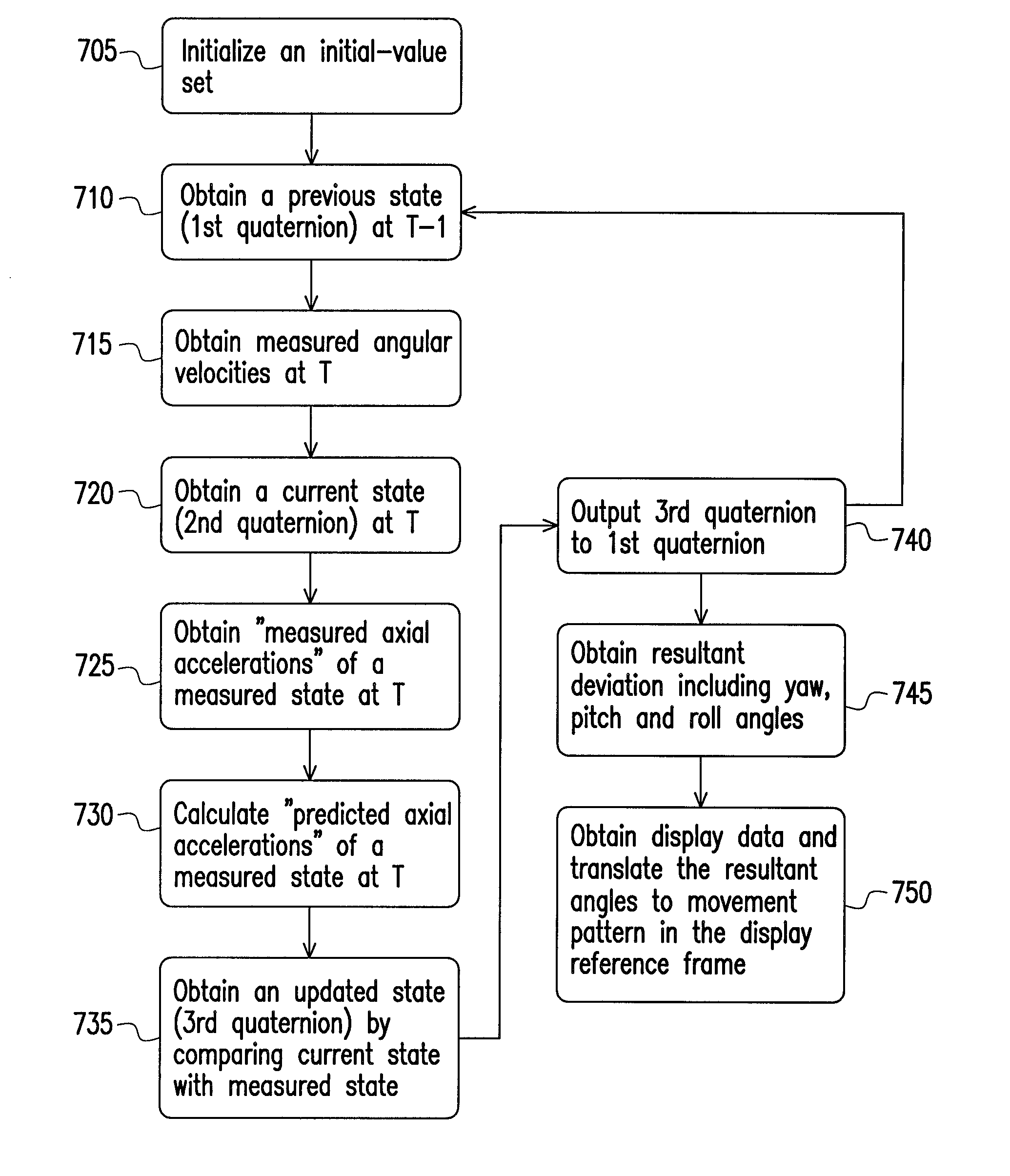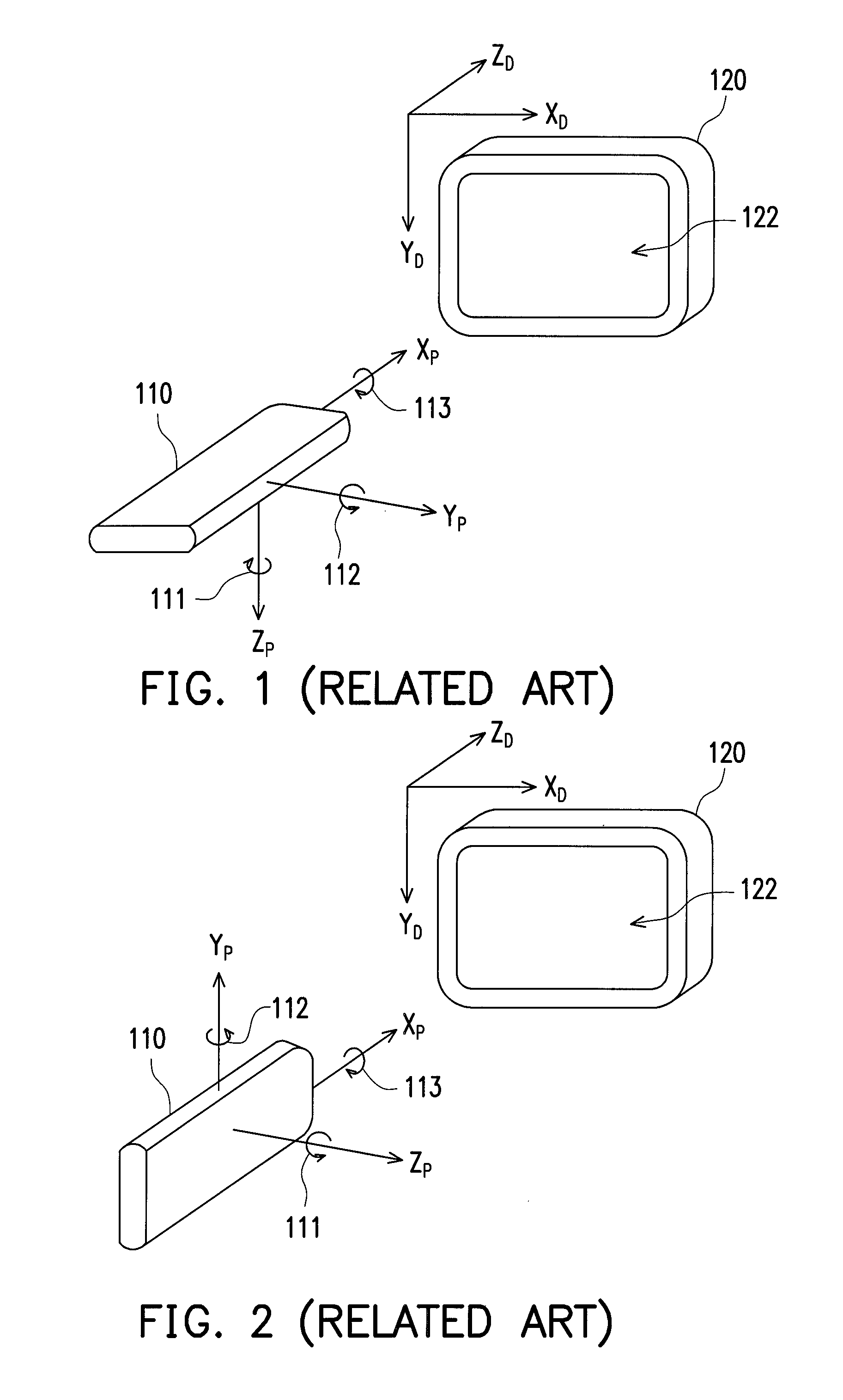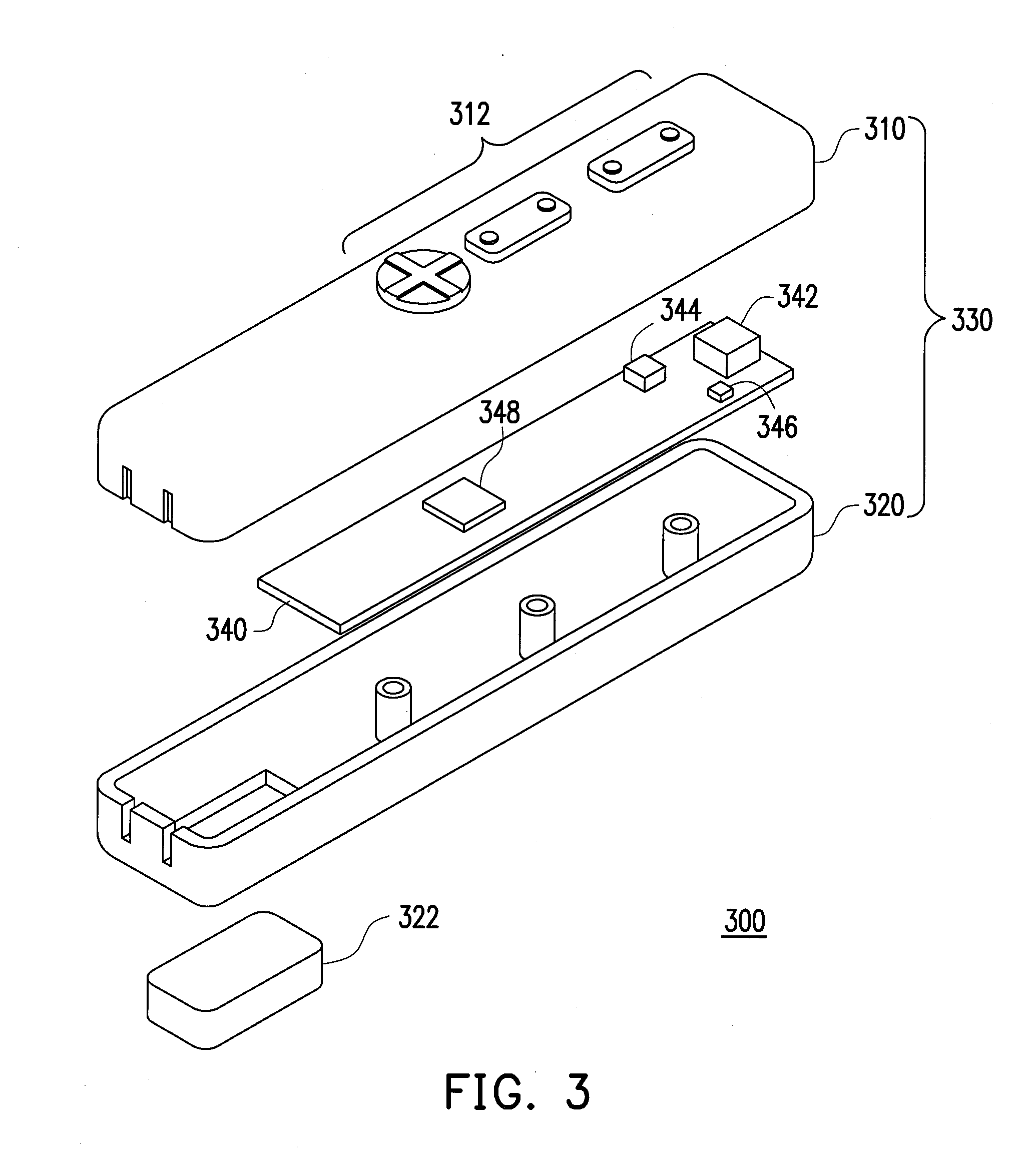3D pointing device and method for compensating movement thereof
a pointing device and three-dimensional technology, applied in the direction of instruments, computing, electric digital data processing, etc., can solve the problems of accumulated errors, unable to angles and directions the compensation disclosed therein cannot accurately or properly calculate or obtain the movements of the pointing device, etc., to eliminate the accumulation of errors, accurate output and obtained
- Summary
- Abstract
- Description
- Claims
- Application Information
AI Technical Summary
Benefits of technology
Problems solved by technology
Method used
Image
Examples
Embodiment Construction
[0031]Reference will now be made in detail to the present embodiments of the invention, examples of which are illustrated in the accompanying drawings. Wherever possible, the same reference numbers are used in the drawings and the description to refer to the same or like parts.
[0032]FIG. 3 is an exploded diagram showing a 3D pointing device 300 according to an embodiment of the present invention. The 3D pointing device 300 is subject to movements and rotations in dynamic environments in a 3D spatial pointer reference frame. The spatial pointer reference frame is analogous to the reference frame XPYPZP in FIG. 1 and FIG. 2. The movements and rotations of the 3D pointing device 300 in the aforementioned dynamic environments in the spatial pointer reference frame may be continuously nonlinear with respect to time.
[0033]The 3D pointing device 300 includes a top cover 310, a printed circuit board (PCB) 340, a rotation sensor 342, an accelerometer 344, a data transmitting unit 346, a comp...
PUM
 Login to View More
Login to View More Abstract
Description
Claims
Application Information
 Login to View More
Login to View More - R&D
- Intellectual Property
- Life Sciences
- Materials
- Tech Scout
- Unparalleled Data Quality
- Higher Quality Content
- 60% Fewer Hallucinations
Browse by: Latest US Patents, China's latest patents, Technical Efficacy Thesaurus, Application Domain, Technology Topic, Popular Technical Reports.
© 2025 PatSnap. All rights reserved.Legal|Privacy policy|Modern Slavery Act Transparency Statement|Sitemap|About US| Contact US: help@patsnap.com



